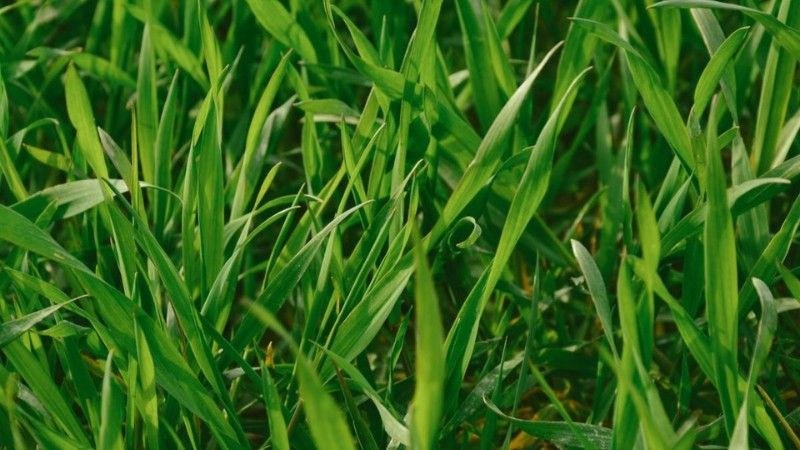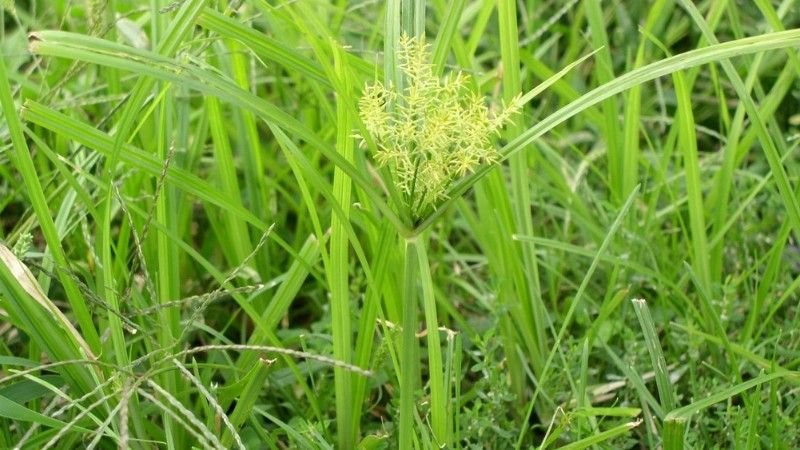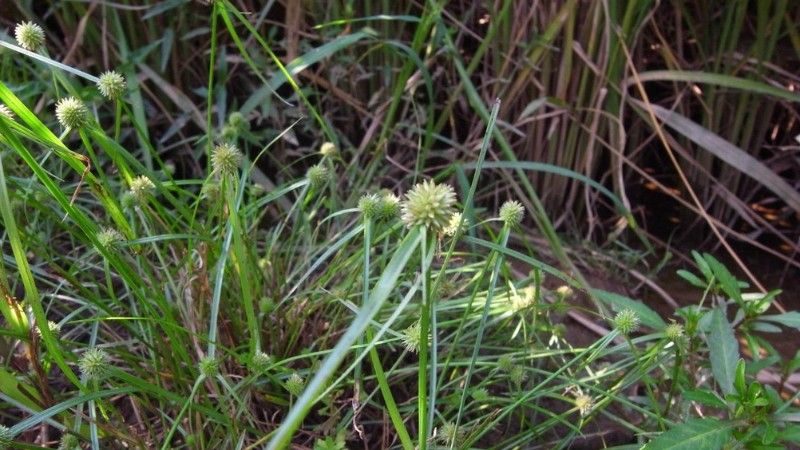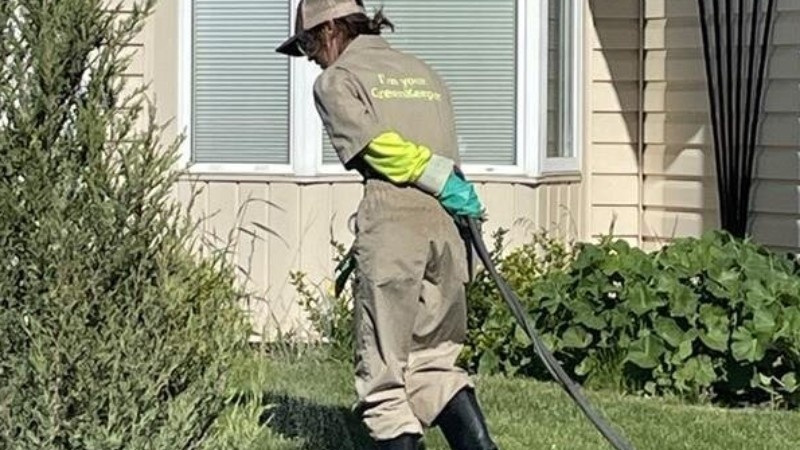What Are Sedge Weeds & How to Remove Them from Your Lawn
Reading time: 5 - minutesIf you’ve ever looked out at your lawn and thought, “Why is that patch growing twice as fast… but in the wrong direction?” chances are, you’re looking at a sedge.
These sneaky weeds don’t play by the same rules as your regular grass or even those broadleaf weeds (like dandelions and clover we covered earlier). Sedges are the biggest troublemakers in the world of grasses—fast-growing, stubborn, and hard to mow. And, if you do decide to mow them, you’ll most likely end up with an uneven mess.
Ready to decode sedges? Let’s go.

Sedge Weeds 101: Spotting these Shape-Shifting Weeds in Your Lawn
Sedges aren’t your typical weeds. They aren’t broadleaf invaders like dandelions, and they don’t blend in with turfgrass like grassy weeds. They’re a whole different category.
So what are sedge weeds, exactly?
Sedges are fast-growing, grassy-looking plants, but they’re not grasses. Their stems are triangular (yep, three sides!), which sets them apart from the round stems of true grasses and the veiny stems of broadleaf weeds.
You’ll often spot them growing faster and taller than your turf, with bright, glossy green leaves that feel a little stiffer than grass blades.
Why Are Sedges Such a Problem?
They spread aggressively through underground tubers called rhizomes or nutlets, in addition to producing seeds. That means once they’re in your lawn, they’re there for good and expanding fast.
They outcompete your turf grass for water and nutrients, leaving it weak and patchy. Even worse, they thrive in moist, poorly drained areas, so their presence can point to deeper issues in your yard’s soil or irrigation.
How Can You Identify Sedges?
- Feel the stem: If it’s triangular and solid, it’s likely a sedge. Try the “roll test” between your fingers.
- Glossy leaves: Most sedges have shiny, V-shaped leaves that grow upright from the base.
- Seed heads: Many sedges produce spiky, brownish seed clusters that rise above the leaf line.
- Growth pattern: They love wet or compacted soil and grow faster than the surrounding grass, creating uneven patches.
- Resilient after mowing: If a weed bounces back quickly and stands taller than your grass shortly after mowing, it’s probably a sedge.
- Grows in colonies: Sedges rarely grow alone. You’ll often find them in tight clumps or spreading patches, especially in low-lying areas.
Common Sedge Weeds Found in Your Lawns
1. Yellow Nutsedge

Yellow nutsedge is one of the most notorious lawn invaders across Canada, especially in regions with wet or poorly drained soils. Despite its grassy appearance, this sedge is easily identified by its upright, lime-green leaves that grow faster than turfgrass, creating an uneven, spiky look.
The leaves are shiny, arranged in sets of three around a triangular stem, and the plant produces yellow-brown seed heads in mid to late summer. What makes yellow nutsedge especially frustrating is its ability to spread not just through seed but also through underground tubers called nutlets.
These nutlets can remain dormant for years, making eradication really tough without a targeted, multi-season strategy. If you spot yellow nutsedge, it’s often a sign that your lawn has excessive moisture or compacted soil.
2. Purple Nutsedge
While less common than yellow nutsedge due to its preference for warmer climates, purple nutsedge has still made appearances in some regions. It’s considered one of the most difficult weeds to control.
This sedge looks similar to its yellow cousin but has darker green leaves and produces reddish-purple seed heads. It also spreads aggressively through underground tubers, which can form complex networks beneath your lawn.
Purple nutsedge tends to grow in clusters and can quickly outcompete turfgrass, especially in overwatered or low-lying areas. Its root system not only makes it hard to pull manually, but its tubers can regenerate new plants even if a small piece is left behind.
3. Green Kyllinga

Green kyllinga is a low-growing sedge that has been spreading in lawns more frequently, particularly in warmer microclimates or irrigated landscapes. Unlike nutsedge, which tends to grow tall, green kyllinga forms dense mats and stays closer to the ground, often going unnoticed until it has taken over large sections of turf.
It has fine, glossy leaves, a three-ranked growth habit, and small round green seed heads that resemble miniature burrs. One of its most frustrating traits is how quickly it spreads through rhizomes, forming thick mats that affects the growth of turf.
4. Poorland Flatsedge
This is an annual sedge. Although not as aggressive as its perennial cousins, it can still be a pesky intruder, especially during the summer months. It grows upright and produces light green, flattened stems with soft, narrow leaves.
It often appears in disturbed soils, garden beds, or newly seeded lawns and prefers moist, warm conditions. Unlike yellow and purple nutsedge, poorland flatsedge doesn’t form tubers, which makes it a bit easier to control through proper mowing and irrigation practices.
However, it still spreads quickly via seeds and can be a nuisance if left unchecked. It tends to die off with the first frost, but if it sets seed, it’ll be back next season unless addressed.
Smart Strategies to Say Goodbye to Sedges
Sedge weeds, as we’ve established, aren’t your average lawn pests. But with a little know-how and persistence, you can take back your turf. Here’s how to remove and control them:
Manual Removal
Start by pulling sedges by hand when the soil is moist. This makes it easier to extract the full root system and those sneaky underground tubers.
Use a weeding tool or a trowel to dig deep, aiming to remove not just the visible plant but the nutlet (tuber) as well. Any piece left behind can regenerate.
For smaller infestations, manual removal can be surprisingly effective, especially if you follow up regularly.
Control Treatments
For larger or persistent sedge invasions, selective herbicides are often necessary.
- It’s important they’re applies in the early growth stage, ideally when sedges are young and actively growing.
- Don’t mow the lawn for 2–3 days before or after application to ensure maximum absorption.
How To Prevent Sedge Weeds From Emerging
The best long-term strategy? Make your lawn a place sedges don’t want to live.
- Mow high to shade out sedge seedlings.
- Aerate compacted soil to improve drainage.
- Avoid overwatering, since sedges love soggy conditions.
- Improve lawn drainage with topdressing or grading if water tends to pool in low areas.
- Fertilize well to boost turf density and give your lawn a competitive edge.
- Overseed thin patches in spring or fall to crowd out sedge intruders before they settle in.
- Edge garden beds and walkways. Sedges often creep in from unmanaged borders, so keep these zones tidy and well-defined.
Green Drop Knows Sedge Weeds (So You Don’t Have To)

Sedge weeds are sneaky for sure, but they’re no match for a healthy lawn and the right control strategies. The best part: you’ve got some options. The trick is acting early, staying consistent, and knowing when to call in the reinforcements.
And that’s where we come in. Our Green Keepers are weed control experts, and know how to spot sedge weeds fast and stop them from taking over your turf.
Check out our lawn care packages and let’s show those weeds who’s boss.

